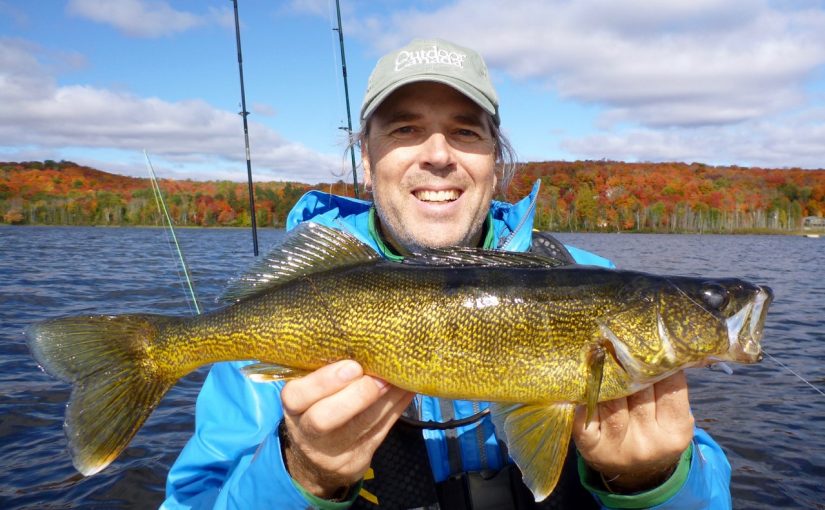In today’s post, Scott Gardner, Associate Editor of Outdoor Canada, shares his love for and experience with kayak fishing. All photos below are copyright to Scott Gardner.
On a cloudless summer afternoon, I paddled around a point on Six Mile Lake, eased my boat through a jumble of boulders, and slipped into a long shallow bay. No more than 18 inches deep and blanketed in lily pads, it was perfect Largemouth Bass habitat.
Even better, the propeller-killing rock barrier made it unlikely that any serious fishing boats ever tried this spot. As my kayak ghosted silently to the edge of the weeds, I cast my lure deep into the lily field. I twitched it twice across the surface, and with a heart-stopping splash, it was ambushed by a football-sized Largemouth Bass.
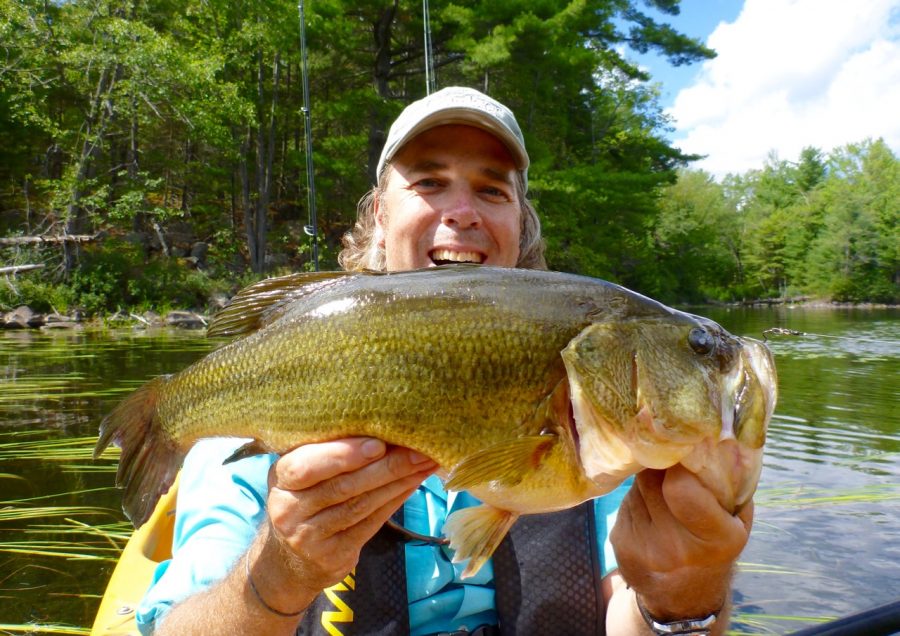
That Largemouth was my biggest Bass of the 2016 season, and one of my biggest ever! And that afternoon shows exactly why you can’t beat a kayak when it comes to fishing Ontario Parks.
As associate editor of Outdoor Canada magazine, I’ve had the opportunity to fish in remote locales all across Canada. But when I have a few days of leisure, one of my go-to adventures is still kayak fishing in one of my favourite Ontario Parks.
In fact, last summer I took some 10 camping and day-trips to five different parks. Here’s why:
1. Kayaks are fantastic fishing machines
If your only kayaking experience is a tippy old clunker at summer camp, you might be dubious about kayak fishing. But modern kayaks — in particular the sit-on-top designs, which resemble a surfboard with a moulded seat and cockpit — are very stable and safe. They’re inexpensive, as well.
Kayaks are also easy to transport and store, which is essential for an outdoor enthusiast like me, who lives in an apartment in downtown Toronto.
I know canoes share some of these attributes, but at the risk of sounding un-Canadian, kayaks simply outclass canoes when it comes to fishing. With their shorter length and low freeboard, ‘yaks are more maneuverable, and vastly easier to control in the wind or as a solo paddler.
And if you’re even a little handy, it’s easy to outfit kayaks with accessories like rod holders, tackle compartments and even sonar/GPS units.
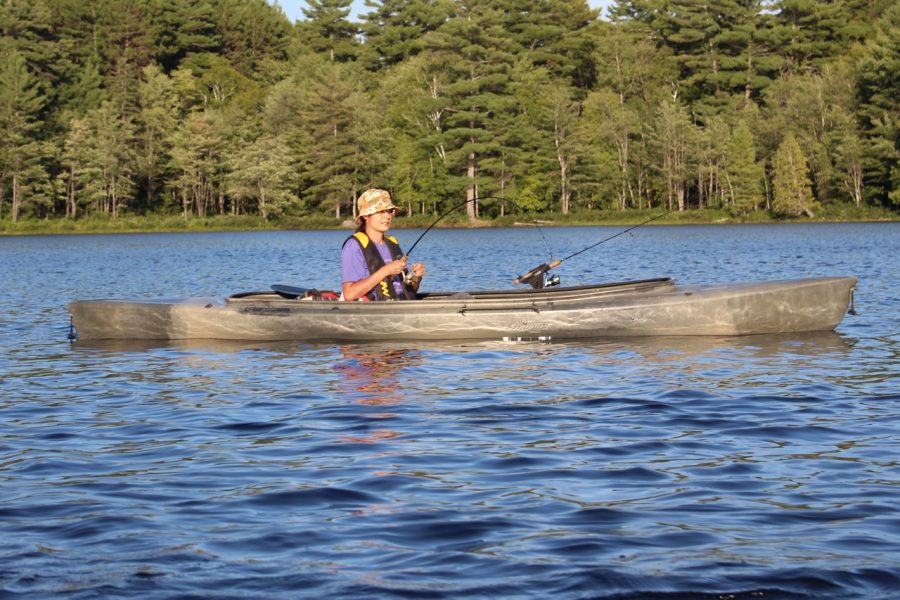
Obviously kayaks lack the speed and range of powerboats, but you can offset that by launching them anywhere, since you don’t need a boat ramp. Kayaks can also reach areas other boats can’t go, like that bay I mentioned above.
A quick word about safety…
Like any small boat, a kayak offers some measure of risk. But if you take sensible precautions, that risk becomes negligible. Even if you can swim like a salmon, you must always wear a PFD. And kayaks are required to carry the safety gear required by federal boating regulations, including a bailer or manual bilge pump, a buoyant heaving line and a sound-signalling device, like a whistle.
I also strongly suggest that kayak anglers use a paddle leash—a light cord tethering you paddle to the boat. Recreational kayakers rarely lose gear overboard, but when you’re distracted by fighting and landing a fish, it’s easier to do than you might think. And you really don’t want to find yourself up the lake without a paddle.
2. It’s an easy way to experience better fishing
Since I started kayaking seven years ago, I’ve fished at a dozen or more Ontario Parks, and at every one, the fishing was 10 times better from a boat than from shore. That’s simply because the underwater features that attract fish (like submerged weedbeds and deep drop-offs) are rarely found in the same places we live, camp or play.
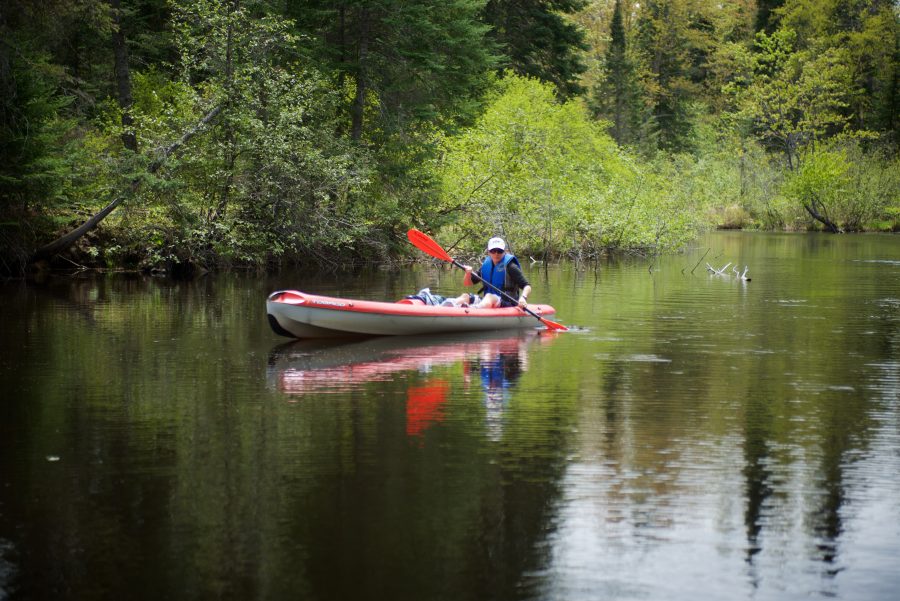
At some of my favourite parks, such as Restoule Provincial Park, Bon Echo Provincial Park and Algonquin Provincial Park’s Canisbay Lake, you certainly can catch a few fish from the beach or the dock. But in many places, just a five- or 10-minute paddle gets you much better fishing.
Getting on the water also offers opportunities for sight-seeing and wildlife viewing. And for all the reasons above, kayaks are a great way to get into boating. I’ve put 100% novices into a kayak, and had them comfortably paddling—and catching fish—in 20 minutes. Yet kayaks are also so versatile that they meet the exacting requirements of hardcore anglers like myself.
3. The Ontario Parks system offers a lot of kayak-friendly fishing
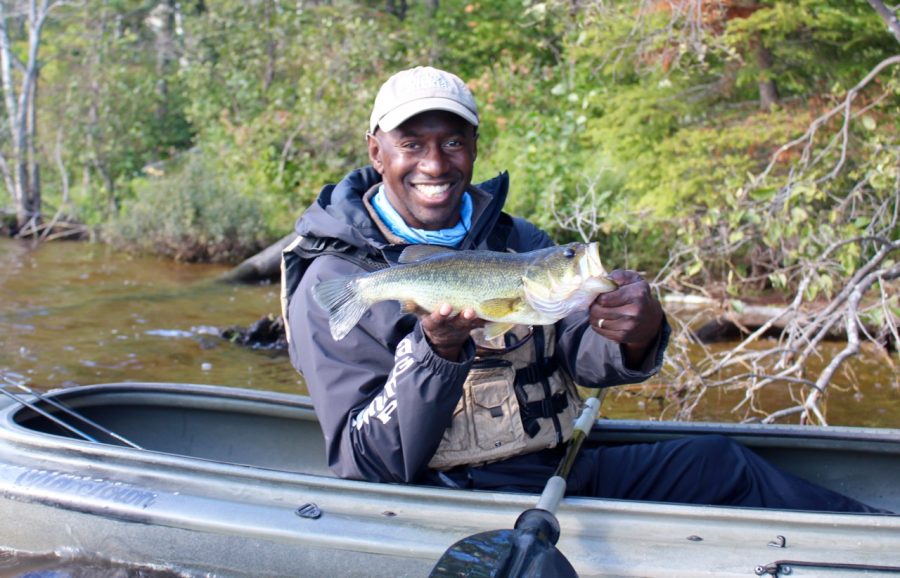
The typical recreational or fishing kayak is well suited for fishing smaller and mid-size lakes and slower rivers, or exploring nooks and crannies in larger water bodies. And that is exactly the kind of environment you find at most parks.
At literally every park I’ve visited, I’ve caught fish within easy range of my campsite, and I’ve never had to venture across water that was challenging. And that includes Lake Trout, Brook Trout, Walleye and Northern Pike in Southeast, Near-North and Algonquin region parks, plus Smallmouth Bass and Largemouth Bass just about everywhere.
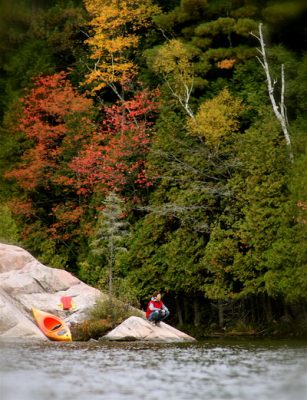 Finally, if you’re not a fan of paddling around powerboats, the parks’ waters with motor restrictions are kayak-fishing heaven. For one thing, motor-restricted waterbodies like Silent Lake Provincial Park really are silent, truly immersing you in the natural world. And not having to share the water with powerboats, skiers and personal watercraft adds to your comfort and safety.
Finally, if you’re not a fan of paddling around powerboats, the parks’ waters with motor restrictions are kayak-fishing heaven. For one thing, motor-restricted waterbodies like Silent Lake Provincial Park really are silent, truly immersing you in the natural world. And not having to share the water with powerboats, skiers and personal watercraft adds to your comfort and safety.
But here’s the real reason kayak anglers should seek out those special places: those lakes tend to have very good fishing. That’s because restricting powerboats keeps a lot of hardcore anglers away, leading to vastly less angling pressure and some great fishing.
Just do me a favour, and don’t tell anyone, okay?
Planning your next kayak fishing trip? Use our park locator to discover the perfect location.
